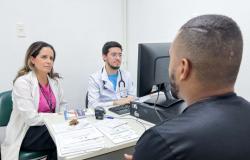There are more and more cases of cancer being diagnosed in young adults
Several studies have revealed a significant increase in the disease in younger generations. There is no single explanation.
There are more and more cases among young people.
First, Olivia Munn, 43 years old, who revealed that she had beaten breast cancer, after contracting it early. Shortly afterwards, 42-year-old Kate Middleton announced that she was receiving treatment for an unspecified form of the disease.
Both the actress and the Princess of Wales are part of a small sample of what is proving to be a worrying trend around the world: cancer diagnoses are becoming more common among adults under 50 years of age. By 2030, signs of early-onset cancer could increase by around 30 percent and the number of deaths it could cause could increase by 20 percent, according to studies by “BMJ Journals”.
“The most surprising finding in the last decade has been the increase in incidence rates among young adults,” says Ahmedin Jemal, vice president of health equity science at the American Cancer Society (ACS).
In 2019, about 103 cancer cases were diagnosed among every 100,000 North American adults under the age of 50, compared to about 100 in 2010, according to a 2023 study published in JAMA Network Open. While this may seem like a minor increase, it is still an alarming sign — especially since, over the same period of time, incidence rates among older U.S. adults have declined. “It’s almost as if the curves have been reversed,” says Dr. Richard Barakat, director of oncology treatment at Northwell Health in New York.
Certain types of the disease find particularly impressive data, as is the case with colorectal diseases — almost twice as frequently as in the 1990s — and others of the gastrointestinal type. Early-onset breast cancer is also becoming more common, having increased by almost four percent between 2016 and 2019. Finally, even lung cancer, a disease typically associated with older smokers, is affecting younger women, even those who have never smoked, says specialist Matthew Triplette, pulmonologist at the Fred Hutch Cancer Center in Seattle.
It is very unlikely that there is a new and very dangerous risk factor that could justify the excessive increase in cases in younger people. It is a complex disease, influenced by a mix of genetics, lifestyle choices and environmental exposures — and is therefore unlikely to be reduced to a single explanation. Eating processed foods, not exercising regularly and drinking a lot of alcohol are risk factors for the disease and these are all common problems in everyday life. A 2019 study proves that many of the incidences in young North American adults are due to obesity, for example.
There are a number of other factors that can contribute to the worsening of the number of diagnoses, such as excessive dependence on antibiotics or even the tendency to have children later. Although efforts to maintain a balanced and healthy lifestyle are essential, ultimately, each individual’s likelihood of contracting cancer is different — genetic markers or family history may be relevant influencers. In these cases, getting a head start can be crucial, as people with a genetic predisposition to the disease are often diagnosed very early in life, increasing the chances of a cure and the use of less invasive treatments.






